Compiled by Team IAnD
Photography: Loïc Thebaud; courtesy the architect
Read Time: 2 min 30 secs
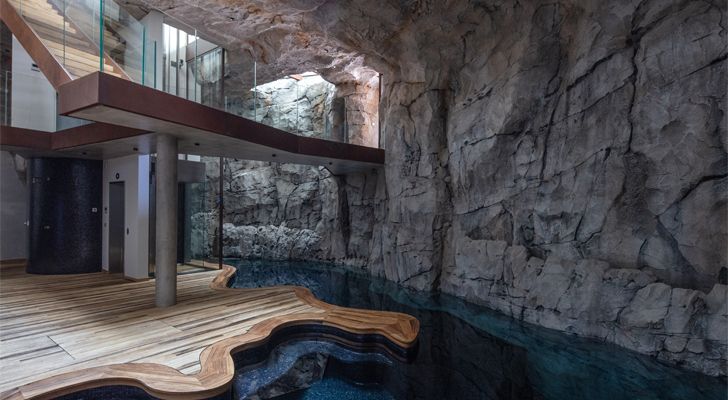 |
| . |
Jean-Pierre Lott Architects craft a very upscale project built into a rock in Monaco – a residence that is as exceptional in its space planning as it is in visual appeal…
This home is carved from a rock without altering it, by respecting its volumes, its fissures and vegetation. Ar. Jean-Pierre works to fit the house into the landscape by working with, rather than against it.
 |
| . |
 |
| . |
 |
| . |
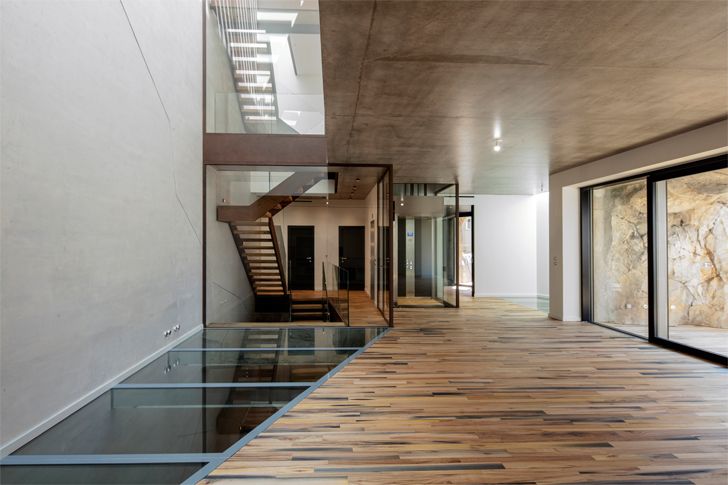 |
| . |
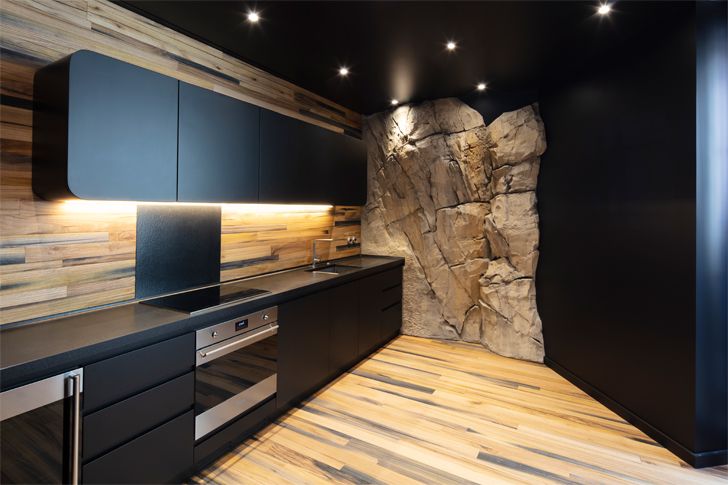 |
| . |
Space is created by gutting the rock, hollowing out the mass and framing views around chosen perspectives. Taking advantage of a vertical break in the rock, the entry is positioned here. Light filters in via the same fracture, running along the entire five levels of the home with access to the ground level from the street via a footbridge overlooking a pool.
In fact, the entire path through the house, linking the rooms is organised around this broad rupture. From the entrance, voids and glass plates provide perspectives of the entire house. Even windows are integral to the rock, as specific frames define specific functions as bedroom or living areas. The living room and three bedrooms are located on upper floors, accessible by a staircase placed within the great facture traversing the house. A glass elevator also serves these floors.
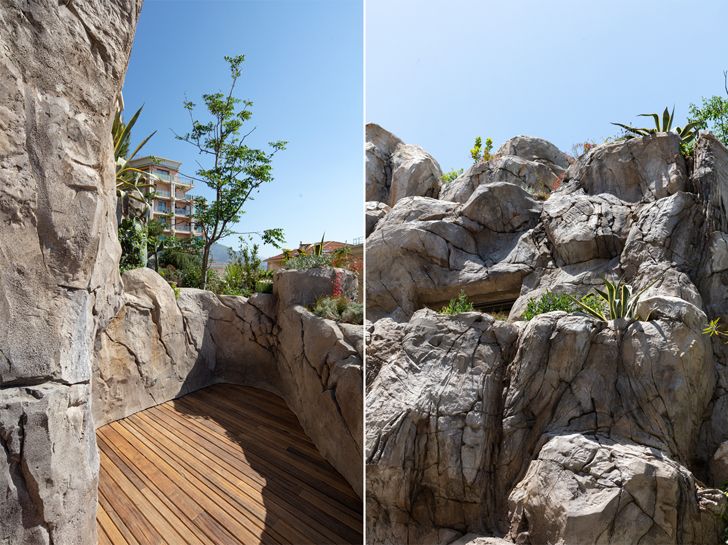 |
| . |
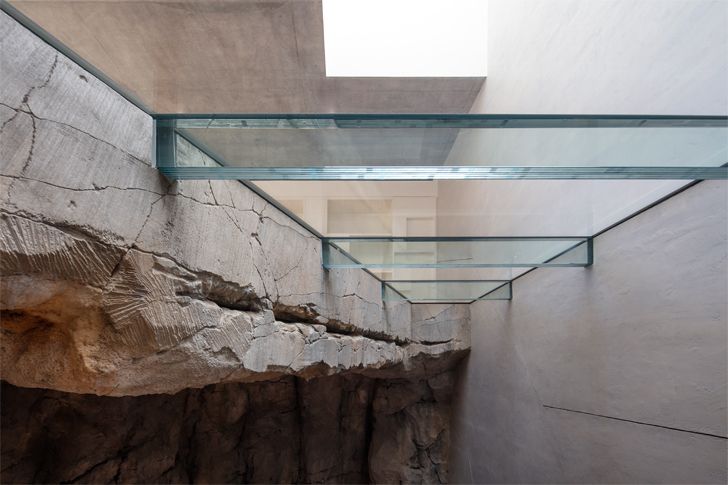 |
| . |
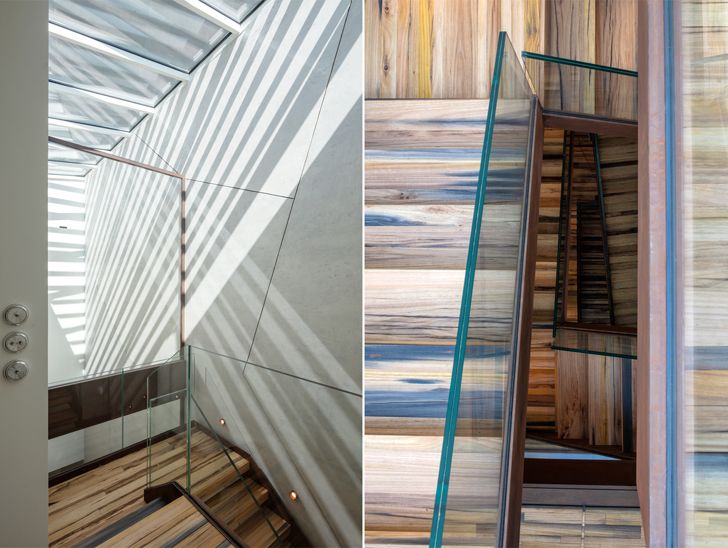 |
| . |
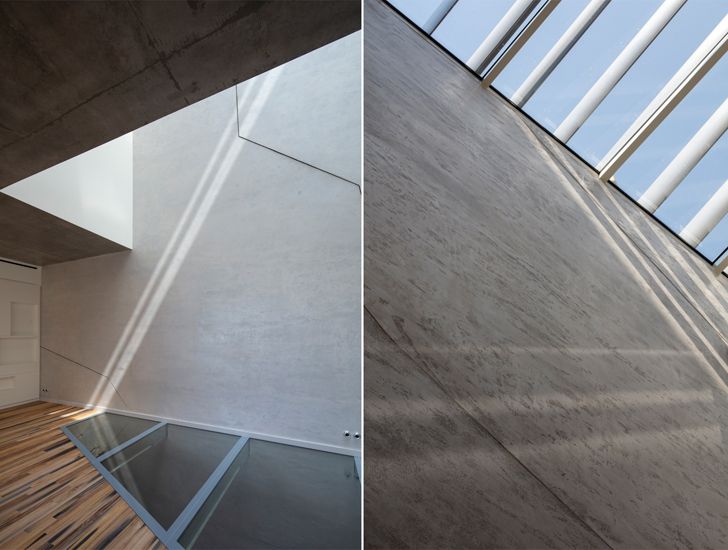 |
| . |
Whilst the ground floor is carved out of the existing rock; the upper levels are recomposed with an identical texture. The designed forms along with the recreated vegetation expose the natural rock features of fissures, cavities and strength, without giving the impression it is merely some sort of cladding of built walls.
The structure is made of natural materials, either recycled or from the region, where Low Carbon concrete and cladding in cork is a healthy and dry form of natural insulation also contributing sound proofing effects. The walls are clad with lime in natural pigments and the wood floors are made of recycled, emerged pilings used in mussel culture systems. Doors and staircases are made of solid wood from responsibly and sustainably managed forests.
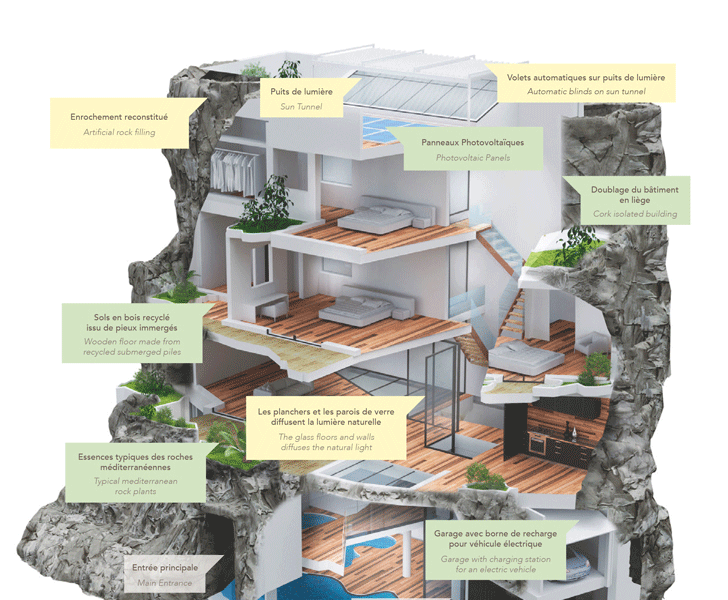 |
| . |
In addition to its purely architectural aspect, its design appropriates thinking about its impact while ensuring its occupants enjoy a dry and comfortable interior environment. The Villa Troglodyte’s consumption is less than 40% of the consumption of a conventional house based on the Réglementation Thermique Française (French thermal regulations). This goal is reached by means of bio-climatic architecture, by the thermal performance of the building’s skin and the search for maximum penetration of and diffusion of natural light. Reliance on renewable energies available on the site, i.e. geothermal and solar, ensures production of most of the Villas requirements.












No comments :
Post a Comment